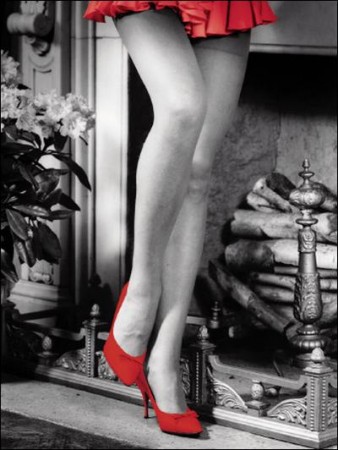Between the wars, and even more in the 1950s, the love affair of black-and-white photography with high fashion gave birth to the frozen perfection of the fashion image. The sharp lines, dark shadow and white light dramatized the angular, exaggerated creations of the New Look period particularly well.
American photographer Richard Avedon captured the self-dramatization, the confidence, sophistication and self-mockery of haute couture in his work for Harper’s Bazaar in the early fifties. Avedon and others loved to place their glacial or cavorting models in bizzare or incongruous situations.
By 1960 a new generation of photographers was seeking inspiration from the grainy images of the new cinematic realism of British films such as Saturday Night and Sunday Morning or Room at the Top. Their work displaced line drawings as the main medium for fashion illustration, but was at times even more mannered, while the search for novelty could lead to downright eccentricity in choice of angles or location. At times the fashion photograph seemed less to attempt to convey information about the latest styles than to capture the mood of an ensemble, or even to suggest a whole lifestyle.
The fashion photographs of the 1960s made of a high fashion a performance, a street event, a triumph of the will. They also transformed photographic models into celebrities and stars, while the photographers themselves -David Bailey, Lord Snowdon, John French- became household names, heroes of the swinging sixties. Michalengelo Antonioni’s film Blow Up -often taken to epitomize “Swinging London”- involved just such a fashion photographer as its main character.
In the 1970s, the imagery became even more mannered and eccentric, or else banal. Black models appeared more frequently, but models tended to become ever more precious, while some photographers, notably the German Helmut Newton, flirted with an imagery drawn from soft pornography.
Related Link: View more Popular Culture stories
Visits: 86



